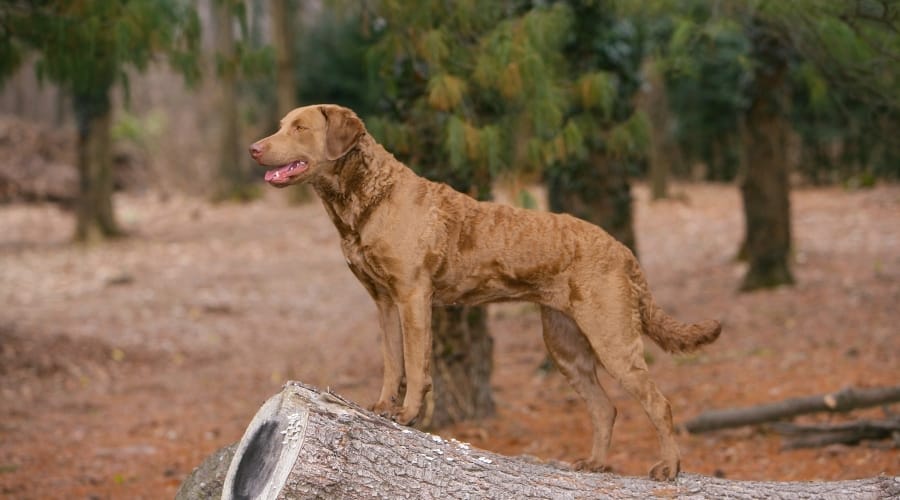Many people have rewarding relationships with their dogs even if they aren’t “easy.” Whether the dogs are working partners on the farm or in the field, a home guardian, or a beloved child’s best friend, the bond between human and dog is like no other. If you’re new to dog ownership, friends and family have likely recommended one breed or the other to you because they are easy to train or great for your particular situation.
The situation may present itself when you’re working with a breed known for its sensitivity or stubbornness. Perhaps a rescue has captured your heart, and although he’s a breed notoriously difficult to train, you feel like you’re ready for the challenge. Begin your journey by investigating what specific traits of the breed in question make him a challenge and learn to work with them. When labeling a dog trainable, we should consider not just intelligence but biddability, the desire to perform for his person. Sometimes, just like instinct can override training, intelligence without biddability makes a dog more challenging.
Regardless of how difficult it is to train your dog, you should teach him the basics in case he ever needs to be rehomed. Some forms of training are universal for house pets. If a dog lives in your house, you’ll need to potty train him. Most experts recommend crate training your pup to provide him a place safe from harm and keep him out of trouble. Leash train any dog you own so you can safely take him to the vet. For better or worse, your dog’s response to basic obedience commands can mean the difference between life and death.
Most Difficult Breeds To Train
Saint Bernard

If a dog has to go out in avalanche conditions and seek out troubled travelers, he has to be able to work alone and have some determination. Saint Bernards were search-and-rescue dogs for a monastery in an alpine pass at 8,000 feet elevation. Beginning in the 1700s, monks began using Saint Bernards to locate lost travelers in this treacherous pass, also known as the White Death, that remained snowed in for much of the year.
Behavior that may not be an issue with a small dog is unacceptable when there are upwards of a hundred and fifty pounds behind it. Training a Saint starts in early puppyhood. Praise and reprimand must come immediately upon the behavior in question, so your Saint Bernard understands what you expect of him. Much of training a Saint Bernard is consistently reinforcing behaviors that are acceptable when he’s full size.
Basset Hound

Basset Hounds are scent hounds. Hunting enthusiasts bred scent hounds to use their sensitive noses to track prey. When the dogs left the hunter’s sight, they still had to focus on their job and continue tracking. The most effective Bassets were selected as breeding animals, and this trait became more and more ingrained in the breed. This single-mindedness could also be called stubbornness. Basset Hounds are often called stubborn.
Luckily, Bassets are food-motivated and loyal, loving dogs. However, you’ll have to be patient when you work with your Basset because repetition and reward are keys to success. So recognize that although they do want to make you happy, sometimes what you want them to do isn’t their number one priority at that moment. Healthy treats help convince him to listen. Training a Basset isn’t over when he learns the command. You must work with him daily to reinforce your training and always be consistent—plan for him to ignore you sometimes. If you’re on a walk, keep him leashed for his safety.
Greyhound

Scent hounds are slow and methodical, but sighthounds like the Greyhound explode into action and run after their prey like the wind. It’s this instinct that makes the Greyhound a challenge to train. If they focus on something, they’ll ignore other stimuli around them, and that may include you. They’ll work with you rather than for you.
Keep training sessions brief with your Greyhound because he’s easily bored. Reward good behavior but be gentle with reprimands. Greyhounds are loyal and affectionate with their family but sensitive to harsh treatment. Yelling at him will undo your lesson more than reinforce it. When you teach the “sit” command, remember that the Greyhound’s anatomy makes sitting uncomfortable.
Borzoi

Much like the Greyhound, Borzois chase down their prey with sheer speed. Originally known as the Russian Wolfhound, Borzois had to be fast and clever to chase down and pin their dangerous quarry. Breeders honed the Borzoi’s ability to make its own decisions, so understandably, he may sometimes choose not to listen to you.
When you work with your Borzoi, keep your sessions brief. Work on a specific command for a few minutes, then shift to play together. Intersperse brief periods of training with more extended periods of fun. Harsh techniques won’t help you bond with your Borzoi. Reward them with treats and praise and set them up for success. No matter how long you’ve been working with a sighthound, recognize that instinct can beat training if a squirrel or rabbit darts out at your feet, and it only takes a moment for something to go wrong. Leash your Borzoi if you’re not in a securely fenced area.
Bullmastiff

Developed from crosses between the Mastiff and early English Bulldog types, the Bullmastiff tracked and captured poachers for the gamekeepers on large English estates. Any dog ready to chase and hold down an adult while waiting for the gamekeeper has to be tenacious. Without deference to the gamekeeper, this tenacity would make him unsuitable as a pet.
Bullmastiffs need to understand their position in the family hierarchy, which is just below all of the family members. If you accept the challenge of owning a Bullmastiff, he must trust you and respond to your commands. Train him with love and patient firmness. He’s not appropriate for all owners and all situations, but in the right home with consistently enforced boundaries, he will defend his family with love and honor.
Chesapeake Bay Retriever

Some of the easiest dogs to train are retrievers, and while breeders created the Chesapeake Bay Retriever to retrieve ducks and geese in the harsh Chesapeake Bay, he’s a different dog than a Labrador or Golden. Chesapeakes have a reputation as “not a dog for everyone,” and there’s truth to the statement. They don’t handle harsh training and have been known to turn on trainers treating them with physical roughness. For the right person, however, the Chessie can be the perfect working retriever.
Chesapeakes respond to gentleness, but they’re more of a one-person breed than their other Retriever cousins. They’ll go to the ends of the earth for their person and protect them with their lives, whether or not they need to. If you’re looking for a family dog that will welcome all your visitors with a wagging tail and sunny welcome, the Chesapeake Bay Retriever is not that dog. If you’re an experienced owner looking for a loyal, courageous retriever born to the task, the two of you may be perfect for each other.
Kuvasz

Like most livestock guardian dogs (LGDs), the Kuvasz generally protects his herd without direction from a shepherd. LGDs can be challenging to train because they’re so independent, but they would be poor guardians without this trait. It’s a careful balance of asserting your dominance as leader of the pack without destroying your pup’s trust.
Kuvaszok need lots of early socialization with people and animals they’ll encounter when they’re adults. They must learn that not everything is a threat and requires a reaction. Keep training sessions short and focus on rewarding the positive while correcting the negative firmly but gently. Like many other LGD breeds, Kuvaszok have a sensitive temperament. They mature slowly, so be prepared for some adolescent moments of poor judgment until they approach their third birthday.
Bloodhound

The Bloodhound‘s nose is the best in the business and one reason you’ll need his frequent walks to be leashed even after he’s well trained. Bred to track missing or hiding people over long distances and challenging terrain, Bloodhounds can be single-minded and unwilling to relinquish their autonomy. Still, they’re friendly by nature and enjoy human company. Basic obedience lessons should start early so your Bloodhound grows up with the habits you want.
The Bloodhound’s reputation as difficult to train is partially due to instinctive behaviors breeders have been selecting over the generations and the Bloodhound’s size. Still, there’s variability even within the breed. He’ll be over one hundred pounds as an adult, so he needs to learn at just a few months old to behave as you wish him to when he’s an adult. If a dog this size takes off on a scent, not every adult will be able to hang on to the leash. Verbal commands act as a failsafe. Regular exercise keeps him happy, and the individuals with the highest energy and tracking instinct probably need to find jobs with professional trackers.
Chow Chow

Chow Chows are powerful, strong dogs, as many others are on our list. The Chow Chow, however, differs in that his temperament is more like that of a cat than a more typical dog. Chow Chows are independent and aloof and generally aren’t impressed with you. The heel and down commands ask him to act contrary to his nature. He prefers to walk in front of you to lead and to remain alert around you. He may learn commands but only choose to perform them when he wants.
Chow Chows have a reputation for having unreliable temperaments and attacking without provocation. The issue may be that their signals have been misread and misunderstood. This doesn’t excuse aggressive behavior, but it may explain why Chow Chows have an unpredictable reputation. Chow Chows are best owned by a breed expert. They need someone experienced in how to read their signals and properly socialize them to calmly accept other people.
Canaan Dog

The national dog of Israel, the Canaan Dog, traces its origins back to the ancient Pariah breed. In the 1930s, the breed’s modern founders captured feral Pariah dogs to recreate an ancient breed. They needed to be versatile enough to herd and guard livestock but also perform many military-style service tasks that required a keen sense of hearing and smell as well as a wild-type self-preservation instinct.
Used as guardians, mine detectors, message carriers, and Red Cross helpers, Canaan Dogs have been instrumental during Israel’s times of war. Canaan Dogs are trainable because they learn commands quickly but are challenging because they lack the willingness to respond to commands reliably, depending on their situation. They aren’t biddable dogs, but if trained with short, positively motivated daily training sessions and a great deal of socialization with other people and situations, they can make devoted family companions.
Final Thoughts
Although we attempt to categorize dogs neatly as easy or hard to train, the reality is more complex. Generally, dogs considered hard to train aren’t very biddable because they think for themselves. Breeds that were bred to hunt on their own, to track, or guard remote flocks of animals from predators had to be able to think for themselves. Generations of selective breeding for these traits created the breeds as they are today, and we need to respect these instincts.
Bringing a puppy home as a new family member should never be a snap decision. Decide what you will expect of your pup and what you don’t think you can live with. Recognize that within breeds, there’s still individual variation. Socialize and begin basic obedience commands as soon as your new pup is housebroken and crate trained. Train with praise and rewards, and be patient as your new best friend learns his way. Your dog may challenge you every day. Thoroughly socialize him with people and everyday situations. Train him daily in short, fun sessions from puppyhood to adulthood, and difficult may be beautiful.





